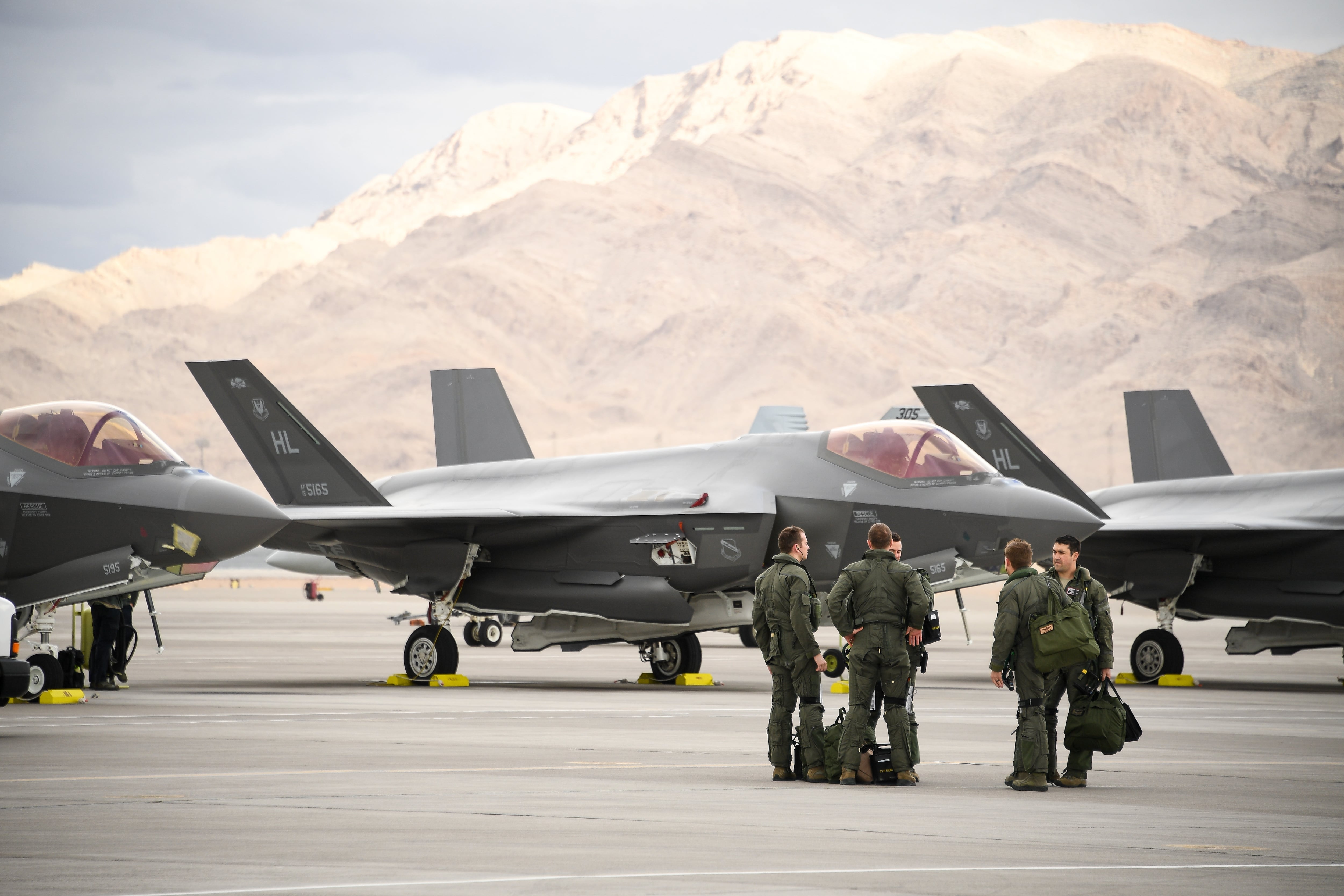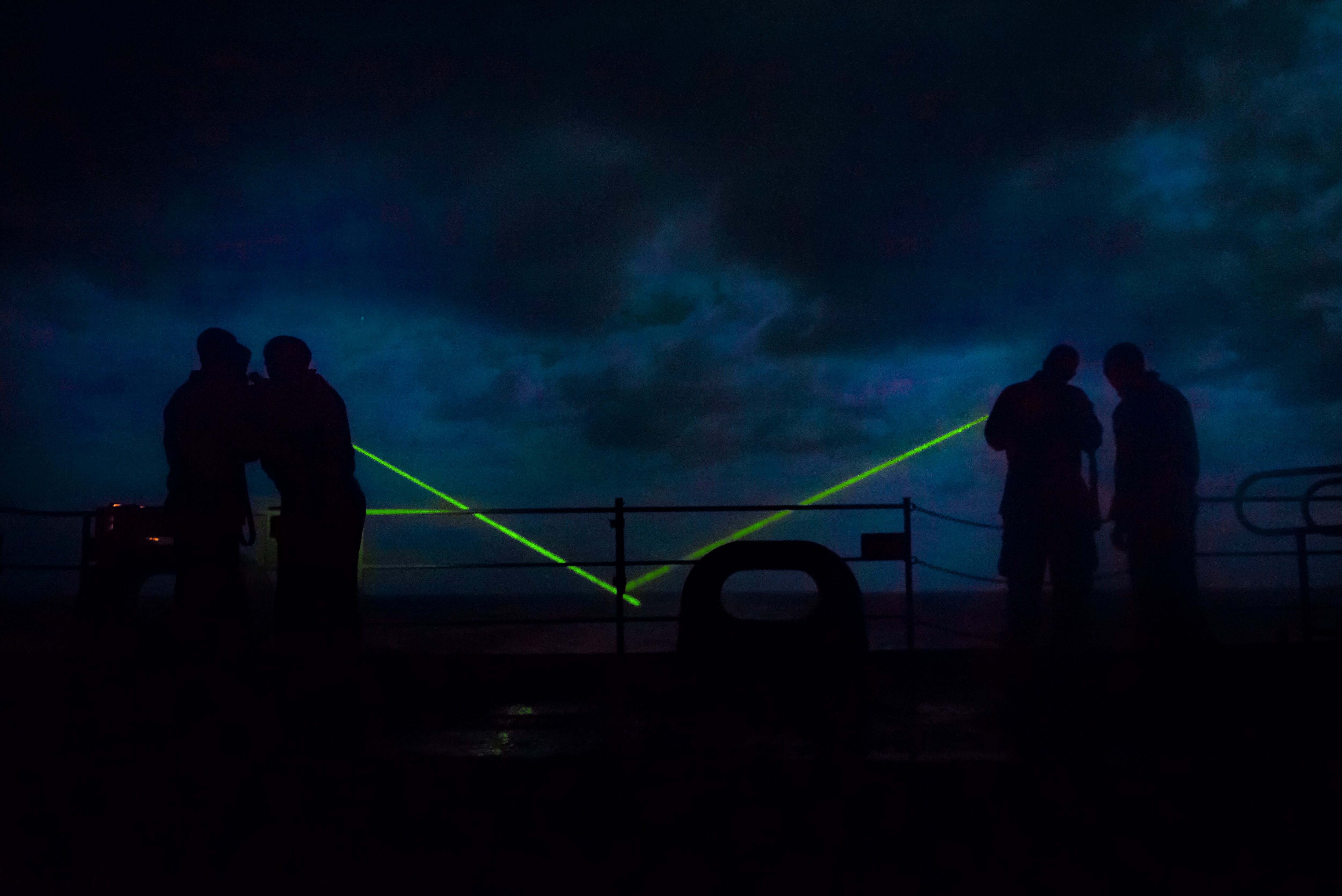WASHINGTON — The Air Force has a new science and technology strategy, and it’s built around the idea that the service needs to generate leap-ahead capabilities like the 1950s-era Century Series that spawned six new fighter jets in five years.
To do that, the service wants to restructure about 20 percent of its S&T efforts into “vanguard programs” that will tie together different developmental efforts across the Air Force’s research institutions and experiment with them to see whether it shows promise.
“If you’re playing hockey, you shouldn’t be shooting where the goalie is. You should be shooting where the goalie isn’t,” Air Force Secretary Heather Wilson said Wednesday. “So the idea with part of this strategy is to assess where our adversaries can’t easily go and get there first and fastest. That’s a winning strategy.”
RELATED

Among the new strategy’s biggest changes is the addition of a new position, the Air Force’s chief technology officer, who will be charged with coordinating efforts across the S&T enterprise and making strategic decisions about the direction of the service’s development efforts, to include the vanguard programs.
This yet-to-be-named official will work directly with the Air Force Warfighting Integration Capability team, which is defining future concepts of operation and helping the service understand what technologies it needs to meet advanced threats.
Wilson wasn’t sure exactly when the CTO will be named, but she’s already signed a memorandum that makes Will Roper, the service’s acquisition executive, responsible for hiring a “design agent” that will figure out how to best structure the CTO office within the Air Force and help select the new official.
“One of the things that this design agent will do is start to look in at acquisition, how will we change both possibly the organizational reporting lines for research, but [also] how will we manage that and change that over time,” she said. “This is not something where we’re going to flip a switch today, but it does mean over time we’re going to change the way we manage our research dollars.”
Still unknown is whether the new strategy will impact the size or makeup of the S&T budget, which runs about $2.8 billion per year. The Air Force also hasn’t identified any potential vanguard programs yet, officials said.
“For some things, if it’s smaller, that could be really quick” and result in an experimentation program similar to the light attack program, said Lt Gen. Arnold Bunch, the service’s top uniformed acquisition official. “Or it could be a big project that we align a lot of dollars to” so that it can transition quickly to a program of record.
The service also wants to use vanguard programs to fuse together emerging technologies in their early stages of development, which are usually developed in a more stovepiped manner, said Air Force Chief Scientist Richard Joseph.
“If it doesn’t work well, then we know at a very early stage the kinds of things we have to work on and change,” he said. “This is probably a less expensive vanguard, but it’s one that’s really vital and important.”
Although no specific vanguard projects have been announced, the S&T strategy identifies five technology areas where it wants to see “transformational” growth:
Complexity, Unpredictability and Mass
The military has talked for years about the need for swarms of autonomous drones and space systems that can be purchased on the cheap, and the Air Force continues to see a need for such assets in the future to augment their legacy fleet of exquisite platforms.
“Progress will rely heavily on a wide range of robotics and autonomy technologies, along with sensors and wireless communications,” the strategy states. “The growing autonomous vehicle market provides an industrial and applied research base that the Air Force can leverage, but military research is needed well beyond what can be expected from the commercial sector.”
Speed and Reach of Disruption and Lethality
The Air Force needs a more diverse inventory of weapons that are faster and have longer endurance.
Although hypersonic weapons — and enabling technologies like scramjet propulsion and high-temperature materials — might be the most visible program for such investment, the S&T strategy notes several others such as low-cost cruise missiles and guided munitions.
Microwave and laser-directed energy weapons hold potential for decreasing the cost of shooting down a target. The service also sees promise in “advanced penetrating kinetic weapons combined with new effects from the electromagnetic spectrum and the space and cyberspace domains to create new offensive and defensive options.”
RELATED

Global Persistent Awareness
The platforms the Air Force uses for intelligence, surveillance and reconnaissance — everything from the U-2 spyplane to its missile warning satellites to the cameras on an MQ-9 Reaper — have given the service unparalleled access to information.
But those assets are too expensive, can’t stay long enough on station, and lack the survivability needed to stand up against more advanced threats. Further, it takes far too long to process the information from these legacy systems, and too much manpower is needed to turn that data into actionable intelligence.
The strategy posits a move toward distributed, low-cost sensors where information can be fused together to “provide resilience through numbers and redundancy and complement more exquisite sensors on standoff platforms.”
Small satellites and low cost launch can help enable this architecture, as can “edge computing” that “autonomously analyzes sensor data at the source” and reduces the burden on legacy communications nodes.
The strategy also recommends investment in new sensing technologies — such as laser and multistatic radar, hyperspectral sensing and quantum field sensing—as well as the microelectronics, photonics and other materials that are used to build sensors.
Resilient Information Sharing
The Air Force relies on its battle networks in order for fighter jets to get accurate targeting information, to share intelligence across platforms, and to conduct close air support of troops on the ground.
But despite huge advances in commercial communications technologies, the Air Force “cannot rely” on the private sector for information sharing capabilities that are able to resist electronic attacks, cyberattacks and GPS jamming.
“The military’s demands on these capabilities exceed the limits of current wireless network technology, even under favorable circumstances,” the S&T strategy reads. “In future conflicts, the challenge will be far beyond any of those encountered in the commercial sector.”
As such, the Air Force will need to field more flexible and survivable battle networks that can autonomously reconfigure itself when threatened. The service sees promise in areas such as software-defined systems, more resilient satellites, encryption and alternate position, navigation and timing systems.
Rapid, Effective Decision Making
Air Force Chef of Staff Gen. Dave Goldfein has spoken at length about the need for the Air Force to move the right information to users more quickly. To do that, the serviced will need to continue investments in areas such as artificial intelligence, predictive data analytics, data fusion and visualization, and autonomous electronic warfare and cyber.
“Automation is especially important in electronic and cyberwarfare where contests occur at far-beyond-human speeds,” the strategy states. “Where possible, automation can assist electronic warfare, cybersystems, and other means to hinder the adversary’s decision-making by introducing uncertainty.”
Valerie Insinna is Defense News' air warfare reporter. She previously worked the Navy/congressional beats for Defense Daily, which followed almost three years as a staff writer for National Defense Magazine. Prior to that, she worked as an editorial assistant for the Tokyo Shimbun’s Washington bureau.




